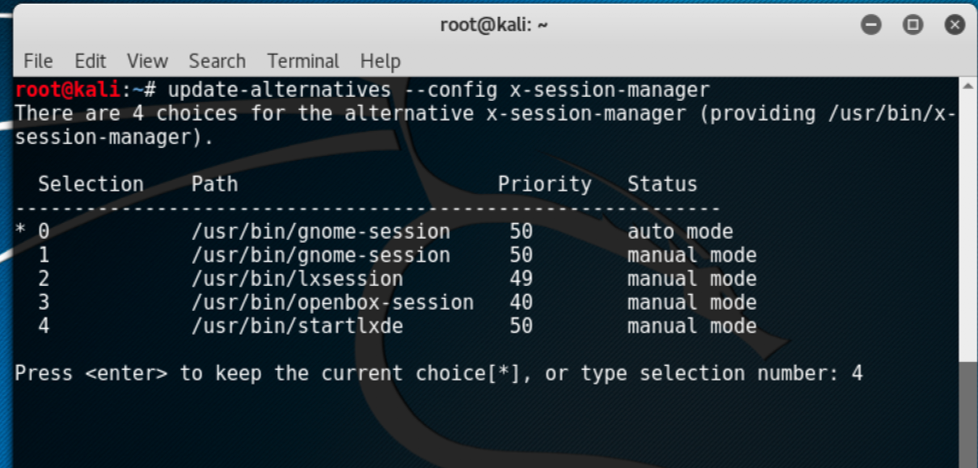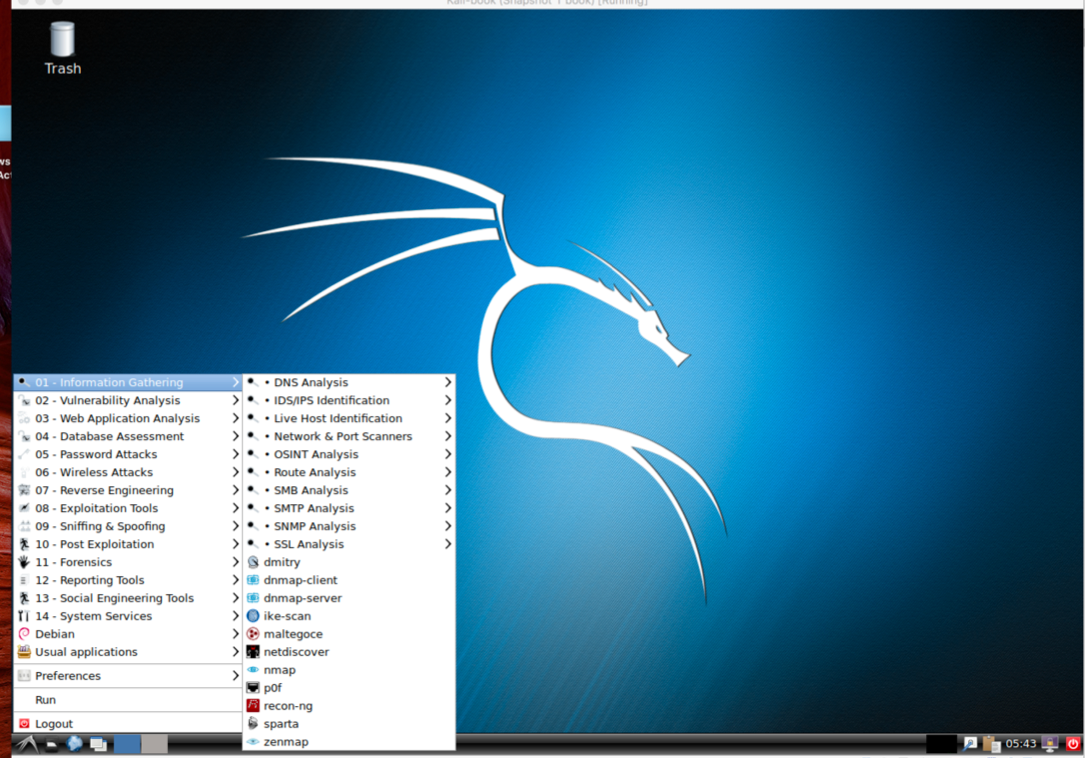LXDE is a free open source environment written in C using GTK+ toolkit for Unix and other POSIX platforms. Lightweight X11 Desktop Environment (LXDE) is the default environment for many operating systems such as Knoppix, Raspbian, Lubuntu, and so on.
To configure the LXDE environment follow the given steps:
- We start by using the following command to install LXDE:
apt-get install lxde-core lxde- Type
Ywhen it asks for confirmation on additional space requirements. - When the installation is complete we open a Terminal window and type the following command:
update-alternatives --config x-session-managerThe following screenshot shows the output for the preceding command:

- Choose the option
lxsession(in our case4) and press Enter.
- Log out and log in again and we will see the LXDE environment:




